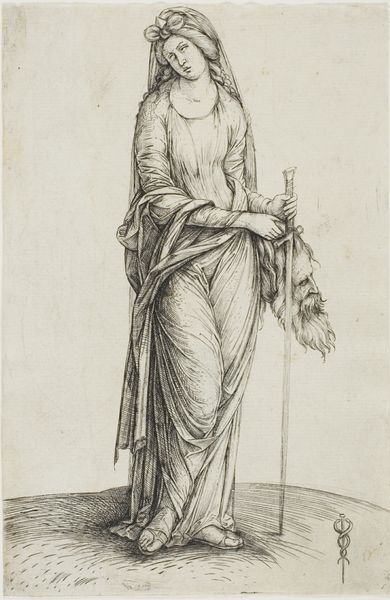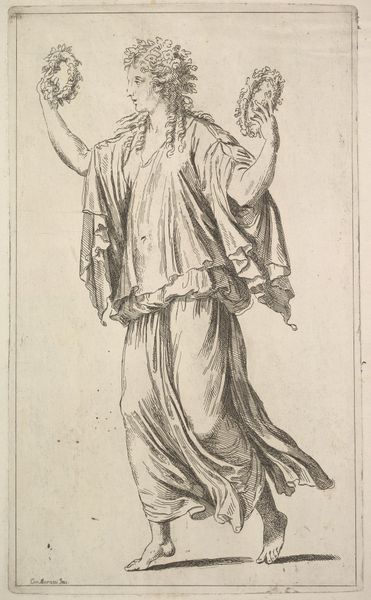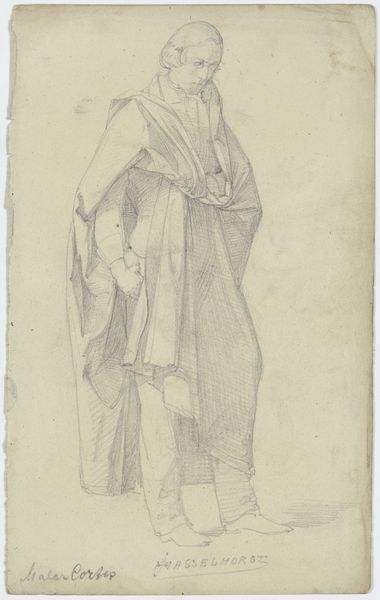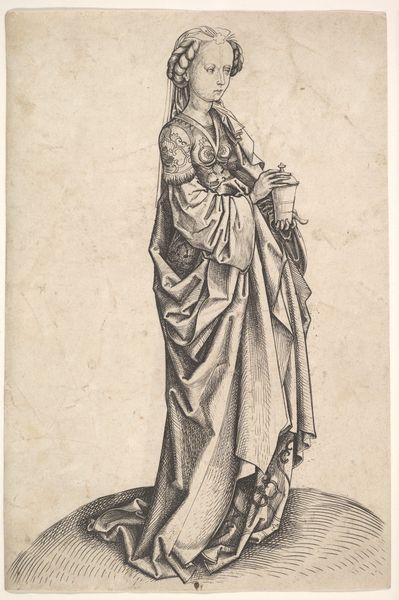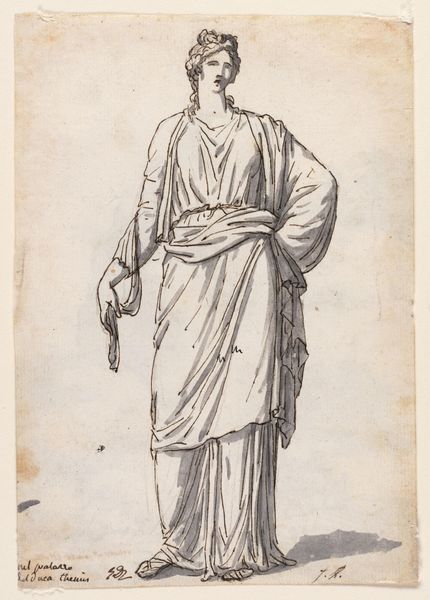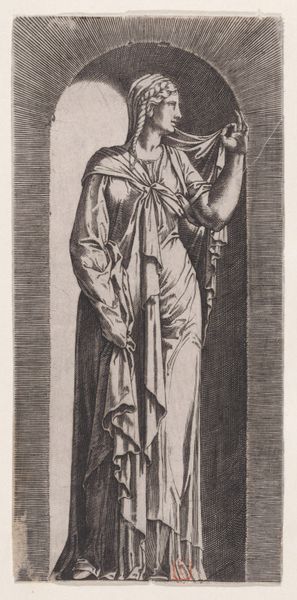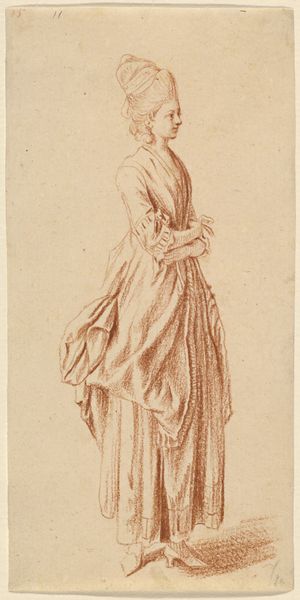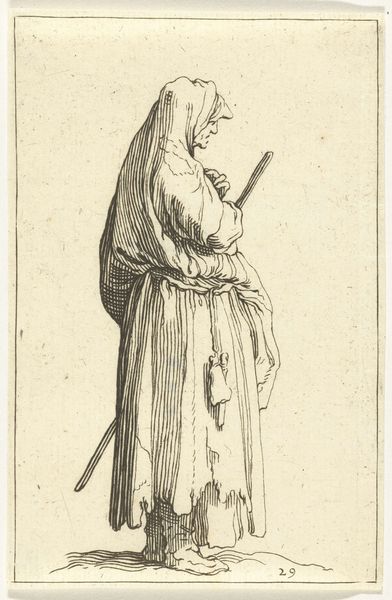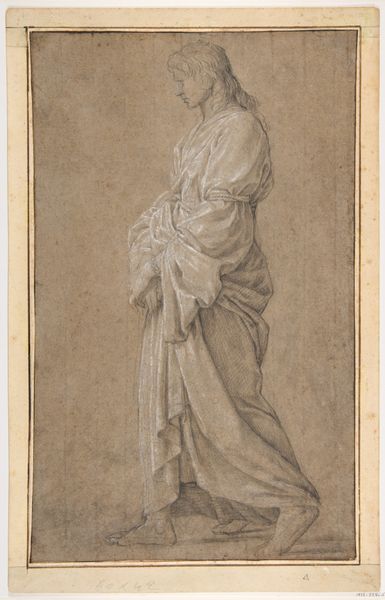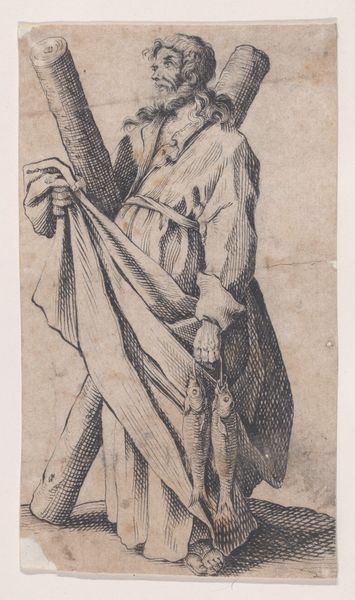
print, engraving
#
portrait
# print
#
figuration
#
form
#
history-painting
#
italian-renaissance
#
engraving
Dimensions: sheet: 18.5 x 9.5 cm (7 5/16 x 3 3/4 in.)
Copyright: National Gallery of Art: CC0 1.0
Editor: So, here we have Jacopo de' Barbari’s engraving, “Judith Holding the Head of Holofernes,” dating back to the early 1500s. I’m struck by the delicate lines of the print, yet also how gruesome the subject is. What’s your perspective on this, looking at it through a materialist lens? Curator: Considering the material conditions of printmaking in the early 16th century, it’s fascinating to see how de' Barbari uses the engraving process not only to depict but almost to *produce* meaning. The very act of carving those lines into the metal plate becomes a form of labor, a violent act mirroring Judith's own. The choice of a print, rather than a painting, allows for wider circulation, disseminating this potent image – and its message – to a broader audience. Who was this intended for, do you think, and why this medium? Editor: That’s interesting. It makes me think about how the creation process itself becomes part of the artwork's message. It was probably made to be accessible. Do you think this print challenges the separation between fine art and more functional or decorative objects? Curator: Precisely! Prints occupy a liminal space; they were more easily reproducible and available than unique paintings. But de’ Barbari elevates the medium, showcasing the skill and artistry involved in its creation, challenging notions of what constitutes 'high art' through skillful manipulation of materials and production processes. Think about the implications: it democratizes the image, making it available for contemplation beyond elite circles. Editor: So it’s about bringing stories and potentially subversive ideas to the masses? Curator: Absolutely. And about the labor of that making, too! The image of Judith itself… her story then gets tied to the story of its production. Editor: It is an interesting way of thinking about it – connecting material processes to the artwork’s themes. Thank you! Curator: Indeed, considering the historical context surrounding the making allows us to better appreciate how de’ Barbari skillfully conveyed and promoted certain narratives through his artistic labor.
Comments
No comments
Be the first to comment and join the conversation on the ultimate creative platform.
